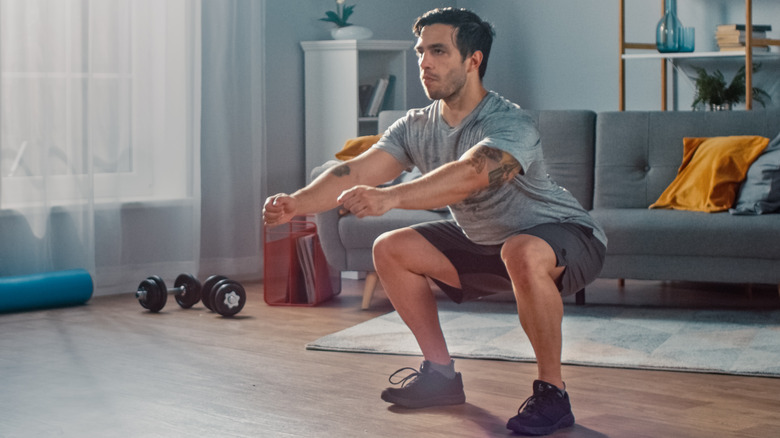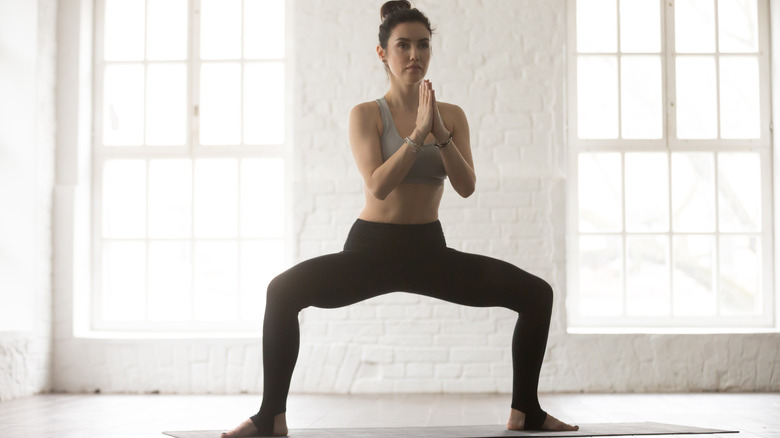The Real Difference Between A Sumo Squat And A Regular Squat
The standard squat is a compound exercise that targets multiple muscles including the quads, glutes, calves, and core (via Healthline). Many people add squats into their fitness routine to increase muscle mass, boost athletic performance, decrease risk of injury, and to gain strength.
A classic body-weight squat is performed by placing the feet hip-width apart, keeping the spine aligned and the core braced, and then lowering the hips into a seated position with the knees over the toes, then driving back up to a standing position. The quads and glutes will feel this movement the most, letting you know the squat is being performed correctly. This basic squat is an exercise that supports everyday movements including walking, lifting and carrying heavy items, and even climbing stairs (via Insider).
There are many variations of the squat, including jump squats, back squats, and overhead squats (via Healthline). These variations work to target different muscle groups, and also help keep the fitness routine fresh. And in addition to these more common variations, you might want to consider the sumo squat.
Switching the stance to target different muscles
The sumo squat is a variation of the basic squat which is really a small shift in the stance that makes a big difference in the movement. John Calarco, certified strength and conditioning specialist, tells Women's Health: "The biggest benefit to doing sumo squats is that the wider stance offers a unique challenge to the inner thigh muscles, or your adductors." The inner thigh muscles (adductors), are more than just a show piece for your swimsuit — these muscles are essential to support the pelvis and hips (per Men's Health). The sumo squat targets these muscles, and helps to strengthen and shape them.
To perform a proper sumo squat, begin with the feet slightly wider than hip-width apart and point the toes outward at about 45 degrees (per Women's Health). Lower the hips down until your thighs become parallel with the floor and then push back up to standing position. Calarco suggests doing three to four sets of up to 15 repetitions.
Both the standard squat and the sumo squat have the added convenience of being exercises you can perform anywhere. If you need more of a challenge, add weight such as a kettlebell or dumbbell.


